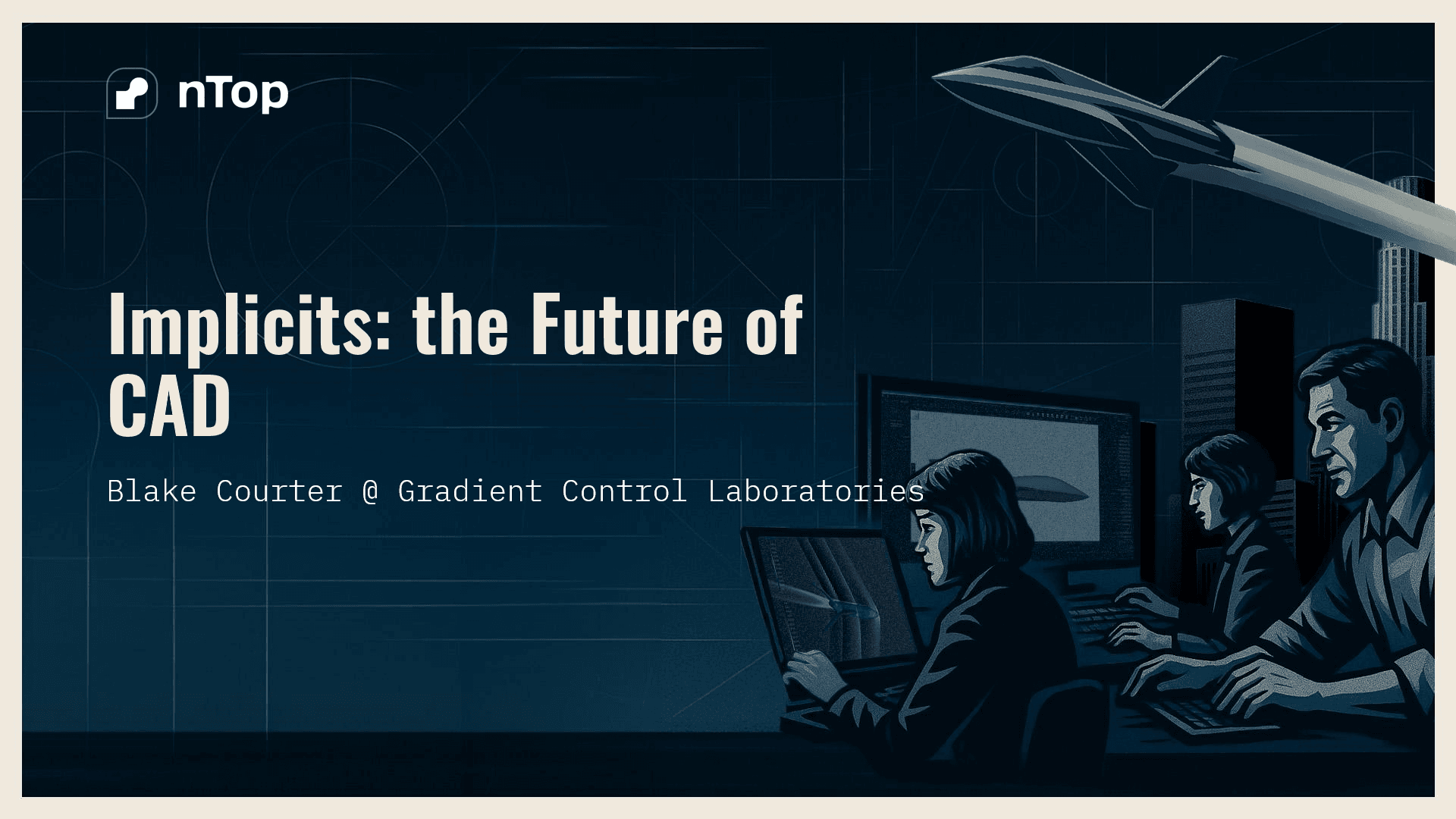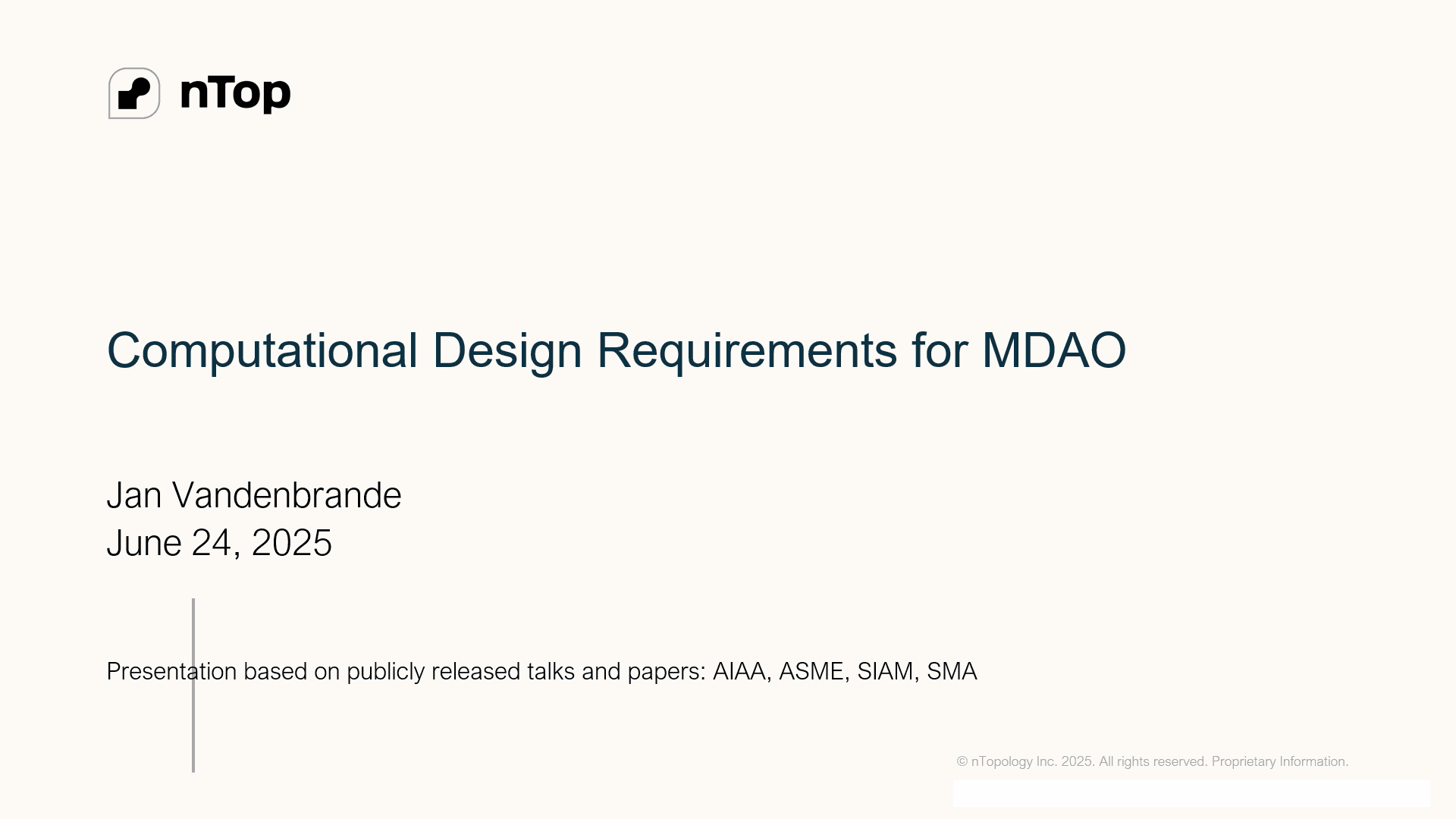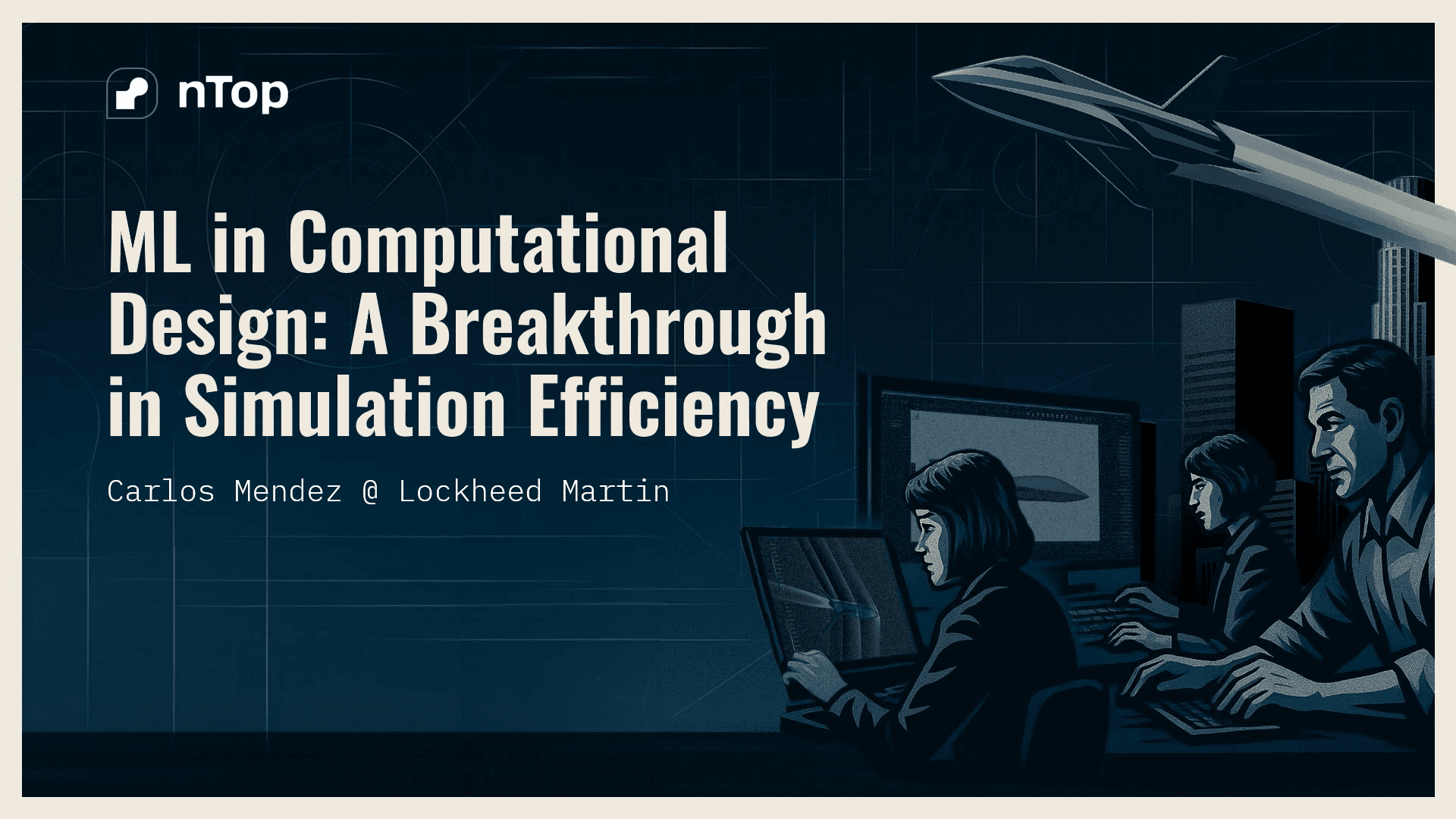Implicit modeling for engineering design

Written by nTop
Published on January 22, 2019
Why implicit modeling
CAD and CAE software uses a variety of representations of shape to define and document real-world parts. These representations have been developed to accommodate different ways of inputting, interacting with, and manufacturing various shapes, and most modern CAD and CAE systems must include more than one. Design engineers must master the nuances of each representation (not to mention the UI to control them) and learn to manage the trade-offs and interoperability challenges between them.
Unbreakable modeling operations
Implicit modeling offers a new set of tools that overcome many limitations of traditional techniques such as boundary representation (B-rep) and meshes, which are becoming increasingly problematic in advanced manufacturing and generative design. For example, B-rep and mesh modelers are unable to perform routine operations such as offsetting, rounding, drafting, and even simple booleans with sufficient reliability. In addition, they cannot handle the complexity of 3D printed models, manually or in automated workflows, let alone describe parts with varying material properties.

Example of a blend operation that rounds between objects while preserving the detail of the original shapes.

Example showing our logo lofted to the same logo rotated a half turn, along with the mirror image of that result.

An entire toy truck assembly with overlapping parts, with three offset regions produced, meshed, and simplified by nTop. Such techniques can be used to create packaging, selectively thicken near net models for manufacturing, or strengthen thin-walled models for prototyping.
The math behind implicit modeling guarantees that operations like booleans, offsets, rounds, and drafts never fail. With implicits, one can simultaneously boolean together and round the intersection of millions of beams in less time than it took to generate the locations of the beams. Periodic and non-periodic lattice, foam, and texturing can be added at any required level of detail.
Automation and geometric complexity
With robust modeling operations, engineers can automate extensive workflows that previously would have required human intervention, such as the design of fixtures, packaging, and support structures. In particular, implicit models are well-suited to generate complex geometry for additive manufacturing, along with the contours and infill or hatch patterns required for CAM output. In addition to fine detail, implicits bring new kinds of modeling features that were otherwise impossible, such as variable thickness offsetting, automatic interference removal, graduated material properties, and displacement-mapped textures. We will be describing each of these benefits of implicit modeling in more detail in future blog posts and webinars.

When two parts interfere, one might normally subtract one from the other, perhaps with some added offset. Implicit modeling offers the full range of blended possibilities in-between.

The regions of a model that require support can be modeled by computing the gradient of the distance field and comparing it to the build direction.
How does one control advanced features such as variable thickness offsets or graduated material density? Implicit models can naturally be modulated or influenced by scalar and vector fields derived from simulation results, engineering design intent, and manufacturing process knowledge.
Field-driven design
Topology optimization, which typically uses simple implicit models, serves as a basic example of field-driven design. Top opt is essentially a feedback loop: simulate, implicitize, impose manufacturing conditions, and repeat, limited to a specific set of boundary conditions and constraints. In a more sophisticated environment like nTop, one can mix and match simulation and geometry to synthesize knowledge-driven, robust engineering solutions. For example, using fields to drive implicits, it is possible to:
- Stiffen a plate in the peaks of vibrational or buckling modes
- Direct both ribbing and toolpaths along the direction of the tensile stress field.
- Place strengthening fibers in a tensile direction and vibration damping structures in the orthogonal compressive direction.
- Vary the composition of a lattice to cause it to fail in a specific way.
- Control the sectional area of a flow path according to specified flow conditions.

A design domain must (top left) support a vertical cantilevered load while also offering support to surrounding geometry. Topology optimization (lower left) and a lattice (upper right) offer solutions to each problem. These fields can be combined together (bottom right) to produce a solution to both problems with one design, and this process can be made rigorous via homogenization.

A gyroid implicit lattice transitions from solid (center region) to beam-like (left) and sheet-like (right) variants.
Although implicit models can export meshes like STLs for manufacturing, a better approach is to directly write sliced or toolpath output for the desired manufacturing format. Using fields, one can modulate properties like beam energy or bead width to control thermal effects and the geometry of the mesoscale lattice. Finally, the strongest advantage of implicit modeling is its ability to work with almost all other kinds of geometry. At nTop, we’ve produced a breakthrough implicit modeling platform that combines B-rep, meshes, and simulation data to generate detailed manufacturing models. In particular, we can directly model off of simulation output like top opt results, which in many cases can remove the need to remodel top opt results in CAD. Instead, we can take it right to manufacturing while also outputting a detailed simulation model for external validation and simplified B-reps for documentation in CAD.
Just the beginning
All of these benefits are designed to remove bottlenecks in design processes and better capture data flow throughout. To learn more about what nTop is doing as it relates to implicit modeling, download our whitepaper. It explains how implicit modeling differs from the traditional CAD approach to deliver considerable and sustainable advantages in reliability, speed, and scalability.

nTop
nTop (formerly nTopology) was founded in 2015 with the belief that engineers’ ability to innovate shouldn’t be limited by their design software. Built on proprietary technologies that upend the constraints of traditional CAD software while integrating seamlessly into existing processes, nTop allows designers in every industry to create complex geometries, optimize instantaneously, and automate workflows to develop breakthrough parts and systems in record time.




